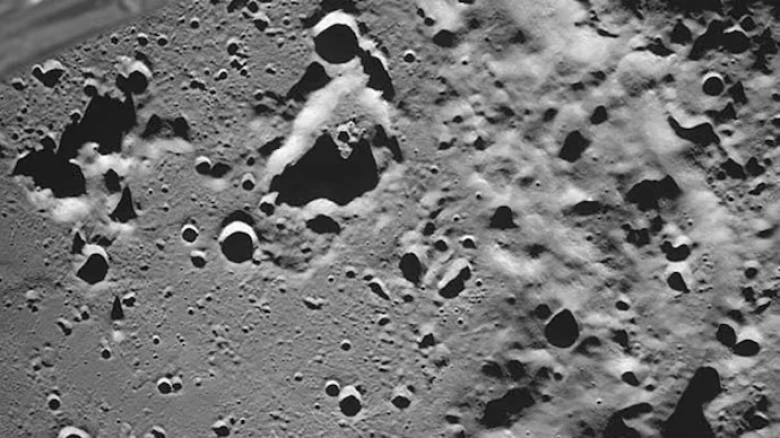Education

Luna-25's ability to unveil the hidden landscapes of this enigmatic hemisphere has already proven to be a...
Digital Desk: Russia's Luna-25 spacecraft has once again etched its name into the annals of space exploration history by transmitting its first captivating images of the moon's far side from its lunar orbit. Among the images, a striking portrait of the elusive south polar crater Zeeman has taken center stage, captivating scientists and enthusiasts alike.
The far side of the moon, often colloquially referred to as the "dark side," has long held an air of mystery due to its permanent concealment from Earth's view, a result of synchronous rotation. Luna-25's ability to unveil the hidden landscapes of this enigmatic hemisphere has already proven to be a watershed moment in our understanding of the moon's geological and astronomical complexities.
The recently revealed images of the Zeeman crater, previously veiled from earthly gazes, have sparked global intrigue and scientific curiosity. With its shaft towering a staggering 8 kilometers above a relatively level base, this unique lunar landmark promises to be a trove of geological insights. The new images, captured with precision using the STS-L television complex developed at the Space Research Institute of the Russian Academy of Sciences (IKI RAS), have augmented the existing repository of data about this intriguing crater.
Recalling the iconic moment in space history when the Soviet automatic station "Luna-3" graced humanity with the first-ever image of the moon's far side in October 1959, the Luna-25 mission emerges as the torchbearer of lunar exploration's legacy. Its mission not only revisits this historical achievement but adds a fresh chapter of knowledge to our understanding of the celestial body that has forever captivated human imagination.
The feat was made possible through the integration of advanced instruments on board the Luna-25 spacecraft. The ADRON-LR and PmL instruments, both conceived at IKI RAS, and the ARIES-L, a collaborative venture with Astron Electronics, facilitated the collection of valuable data. These instruments enabled the spacecraft to measure gamma rays and neutron fluxes emanating from the moon's surface, while also providing crucial insights into the circumlunar space plasma and the composition of the gas and dust exosphere in lunar orbit.
As anticipation grows, all eyes are now on the next phase of Luna-25's mission – a historic lunar landing. If successful, Luna-25 will carve its name into the record books as the first spacecraft to touch down on the southern polar region of the moon, preceding India's Chandrayaan-3. The landing could usher in a new era of lunar exploration, deepening our understanding of our closest cosmic companion and paving the way for further exploration endeavors.
In a world still fascinated by the mysteries beyond our planet, Russia's Luna-25 mission stands as a testament to human ingenuity, scientific cooperation, and the indomitable spirit of exploration. The captivating images of the Zeeman crater and the promise of a historic lunar landing remind us that the moon, a constant presence in our night sky, continues to hold secrets waiting to be uncovered.
Leave A Comment